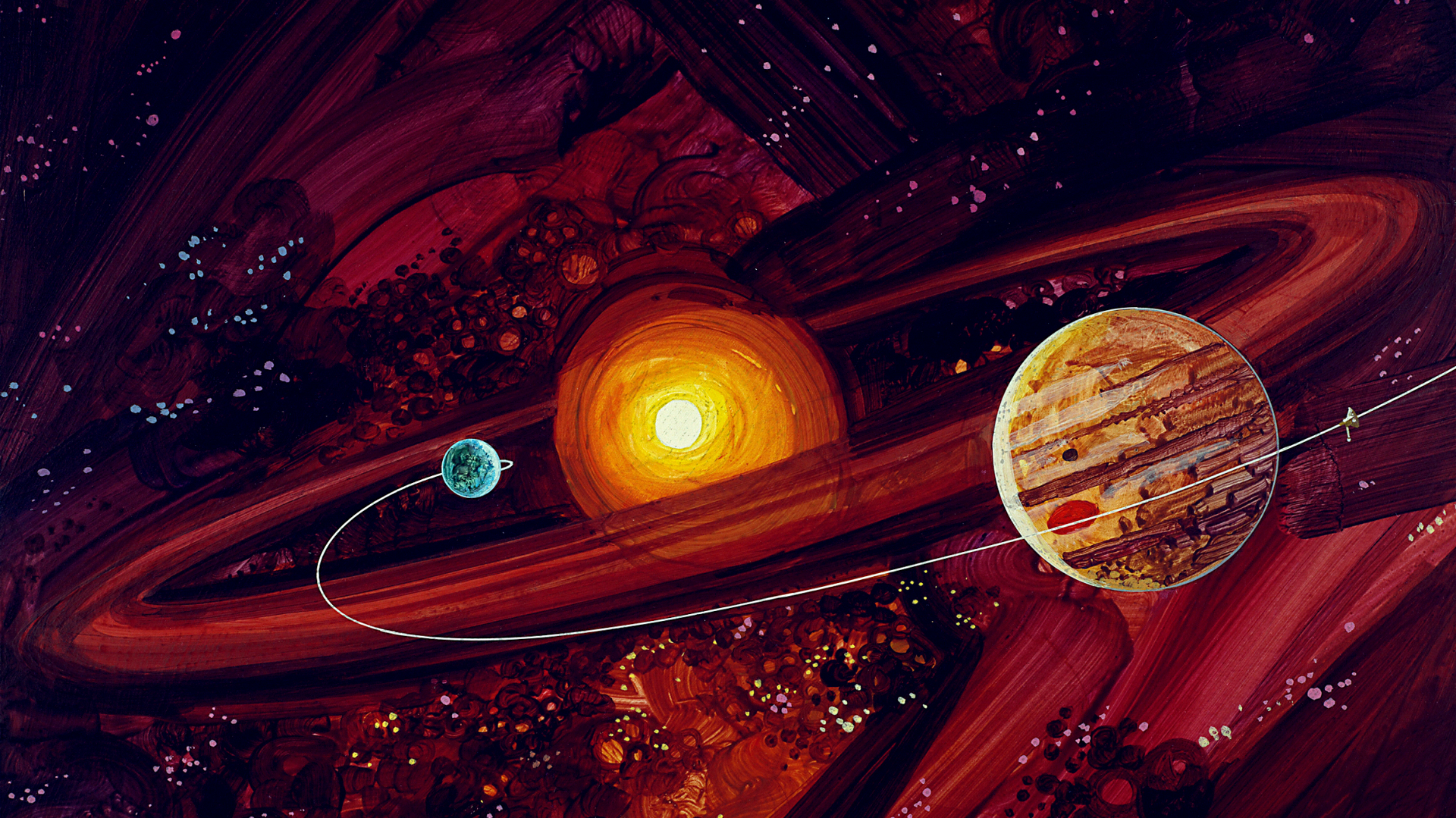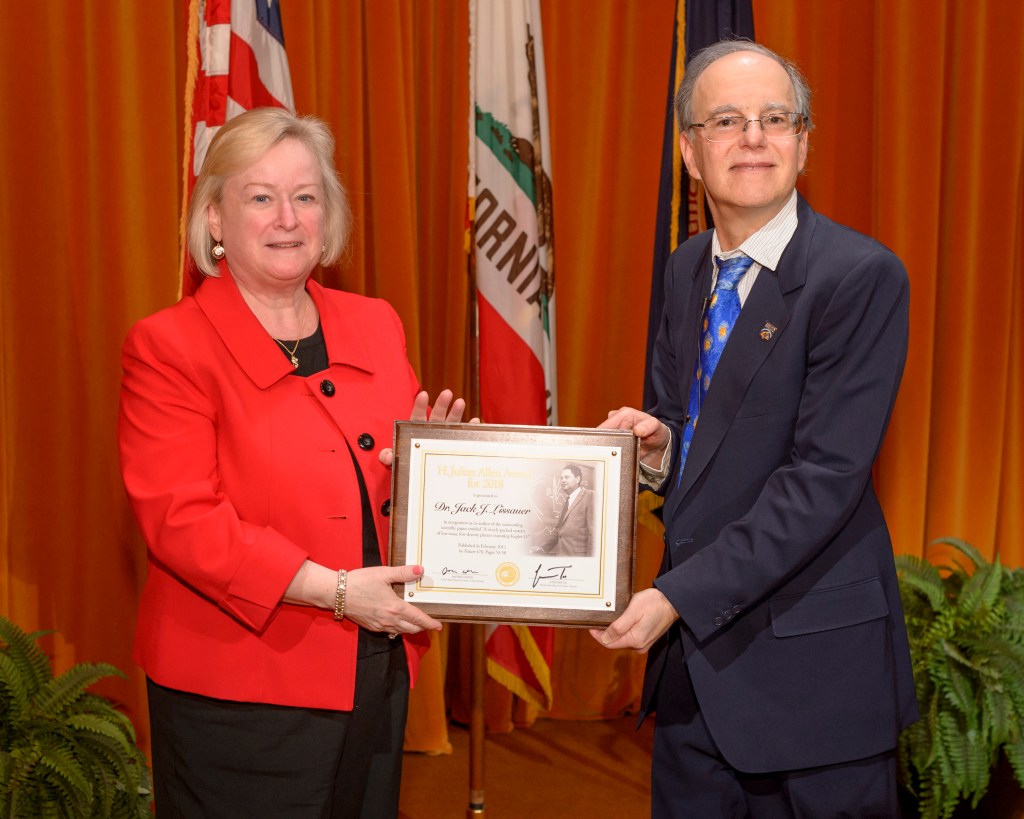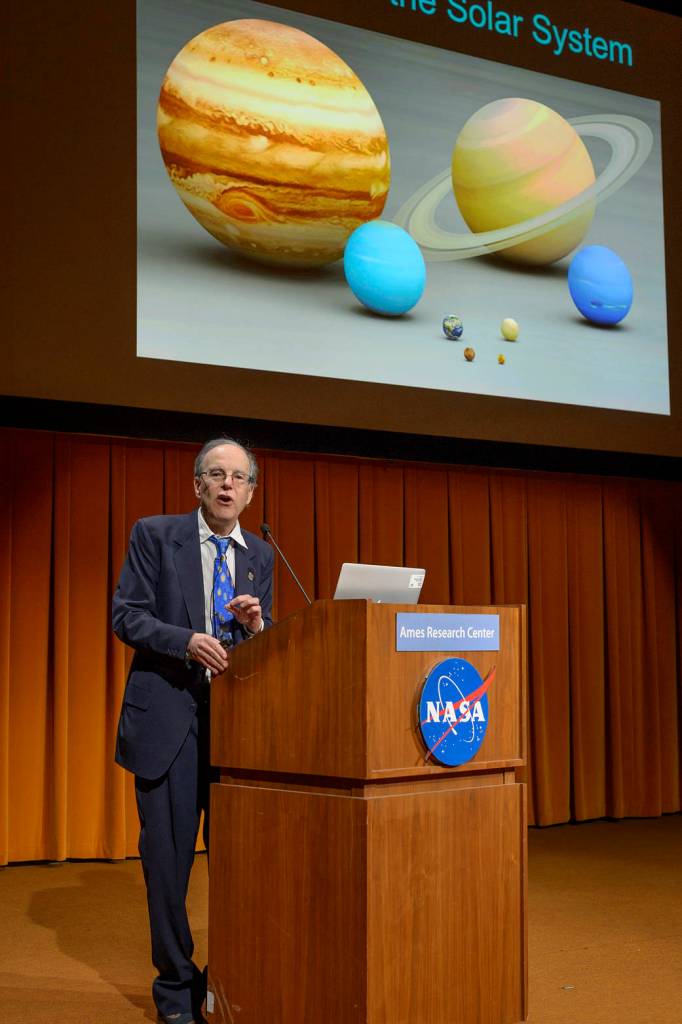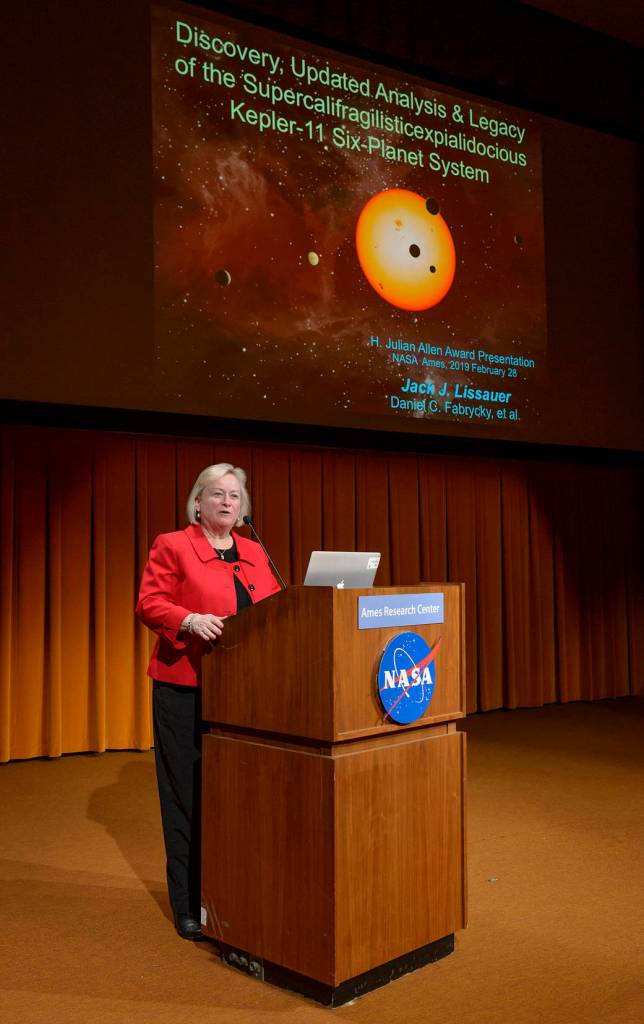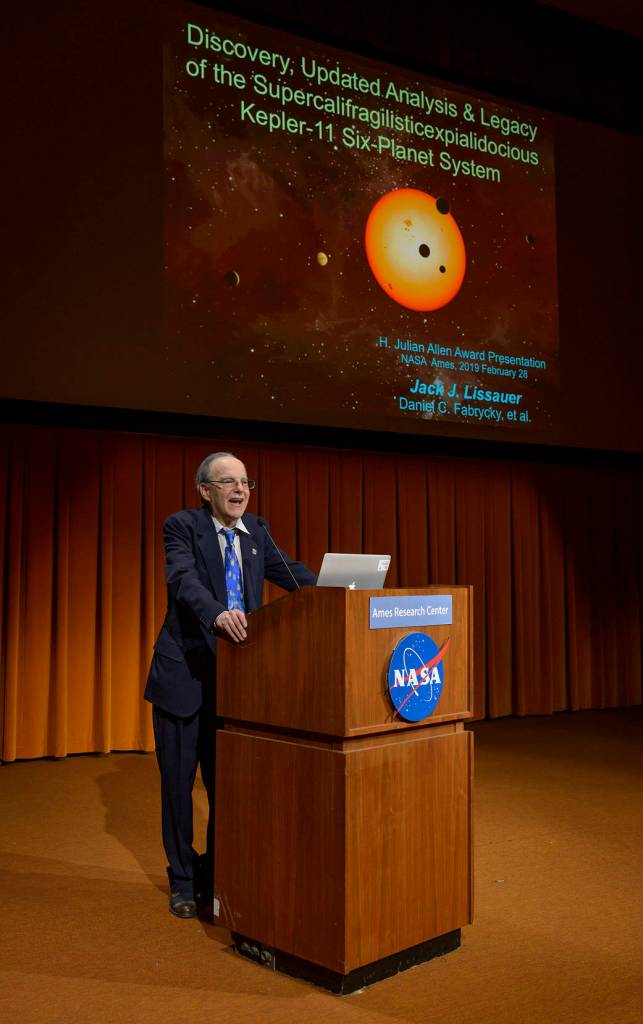2018 H. Julian Allen Award Winner – Jack J. Lissauer
The H. Julian Allen Award is truly one of NASA Ames Research Center’s highest honors. It was established in 1969 to annually recognize a scientific or engineering paper of outstanding technical merit and significance. In 2018, the H. Julian Allen Award was awarded to Dr. Jack J. Lissauer for the paper entitled “A closely packed system of low-mass, low-density planets transiting Kepler-11” published in Nature 470, 53-58, (February 2011). This paper described new classes of planetary systems and planets. It is the first system discovered to have more than three tightly concentrated, transiting planets orbitng in the same plane. It also contains planets that are less massive than Neptune with much of their volumes occupied by hydrogen and/or helium gas.
Abstract:
This presentation will tell the story of the discovery of Kepler-11’s planetary system and summarize the current knowledge of the system. Kepler-11 stood out from previous discoveries as having numerous planets on closely-spaced orbits. An analysis of the non-periodic transit times not only confirmed that the inner five bodies were planetary in nature, but also measured their masses. This was the first time that planetary masses were determined from transit timing variations (TTVs) alone; TTVs have now provided mass estimates for the majority of small exoplanets whose sizes and masses have both been measured. Kepler-11’s planetary masses lie between those of Earth and Neptune, and the measured densities are surprisingly low. They are prototypes of a class of planets called sub-Neptunes, less massive than Neptune yet still primarily H/He gas by volume. The system as a whole is a prototype of dynamically close-packed planets. The image designed for the cover of Nature magazine is strongly rooted in the data, a rarity for exoplanet art, and it has become an iconic representation of Kepler’s discoveries.
Biography:
Dr. Jack J. Lissauer is a Space Scientist in the Planetary Systems Branch at NASA Ames Research Center, where he conducts research on planet formation, planetary dynamics and exoplanets. Dr. Lissauer serves as an editor for the journal New Astronomy Reviews and lectures as a Consulting Professor in the Department of Geological Sciences at Stanford University. He has authored or co-authored more than 190 refereed scientific technical papers in planetary science and astrophysics, as well as two advanced planetary sciences textbooks. He has served as a scientific co-investigator for NASA’s Kepler and TESS spacecraft missions to discover transiting exoplanets. His awards include the Harold C. Urey Prize from the Division of Planetary Sciences of the American Astronomical Society (AAS), the Chambliss Writing Prize from the AAS, two NASA Honor Awards for Exceptional Scientific Achievement and two H. Julian Allen Awards for highly impactful research publications. He is an Ames Associate Fellow and a Fellow of the American Geophysical Union. Dr. Lissauer is also President of the International Astronomical Union’s Commission on Exoplanets and the Solar System.
























